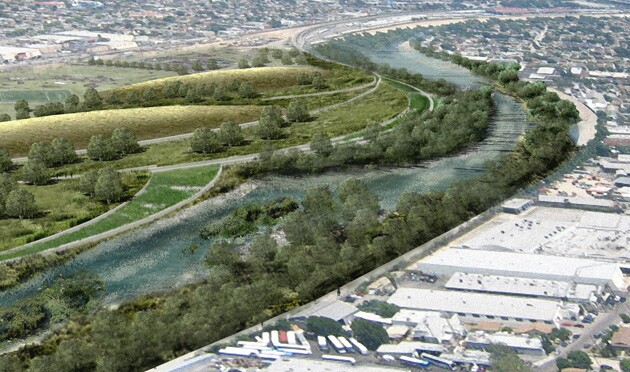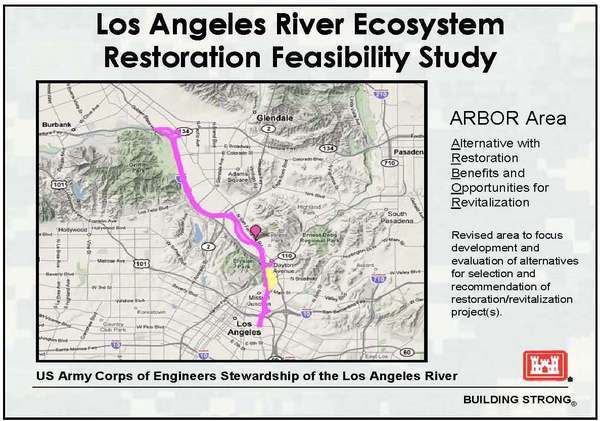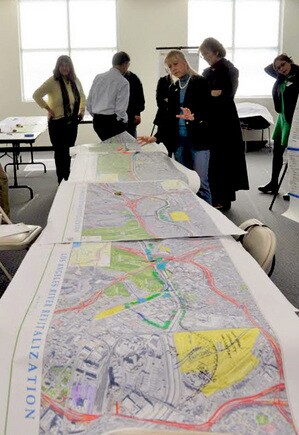Complex Los Angeles River Environmental Study Nears Completion


Friends of the Los Angeles River (FoLAR) is a non-profit organization founded in 1986 to protect and restore the natural and historic heritage of the Los Angeles River and its riparian habitat through inclusive planning, education and wise stewardship. This weekly column will support our efforts toward a swimmable, fishable, boatable Los Angeles River.
There is an important L.A. River study currently in progress. It has the very long name of "Los Angeles River Ecosystem Restoration Feasibility Study". Its nickname is the "ARBOR" study -- an acronym for "Alternative with Restoration Benefits and Opportunities for Revitalization". Either way, it's a mouthful.
The big study is a 50-50 partnership between the federal lead agency: U.S. Army Corps of Engineers, and the "local sponsor": City of Los Angeles, Bureau of Engineering. It has been in progress since 2006, with projected completion in 2013, and carries a price tag of over $9 million. The focus of the study has been narrowed down to the mostly soft-bottomed Glendale Narrows, a 10-mile stretch of the river from the north tip of Griffith Park to downtown Los Angeles. It is seen as the precursor to the implementation of many Los Angeles River revitalization projects.


The goal of this study is to identify opportunity sites where ecological value can be restored to river habitat while maintaining adequate flood protection. Workshops have taken place over the past six years, allowing stakeholders to offer input, and in the coming months the two partner agencies will present to the public three plan options, which will include and condense the many ideas contributed. [In the meantime, there will be an update on the status of ARBOR study at the River Cooperation Committee Meeting to be held at 1 p.m. on Monday, July 9 at L.A. City Hall, Room 1020. The meeting will be open to the public.]
Once a final plan is chosen, it will be vetted through an external peer review. Then, the decision document will recommend a plan to Congress for authorization. Upon approval, work will need to be funded and scheduled, most likely in phases over time. The U.S. Army Corps of Engineers will manage project construction, and the project costs will be paid 65% by federal funds and 35% by municipal funds.
Some measures that may be included in the design are native plants and invasive plant removal, natural filtration strategies, habitat connectivity for wildlife, passive recreation such as trails, and some concrete removal and reconfiguration. This will revitalize the river for animals and humans and help to clean the water. Key riverside land parcels will need to be acquired, some requiring cleanup of industrial contamination.
It's important for Angelenos to know about these major plans. Although the idea of river revitalization is reaching the public consciousness, the media hasn't reported much about the particulars of this study to the community. You may have the opportunity to attend presentations during a public comment period in 2013; until then it is always helpful to tell your federal representatives that you support river revitalization and this important study. In the meantime, when you visit the river, you can help by simply holding the vision in your mind for a lush wildlife corridor and a recreational river greenway from the mountains to the sea.



